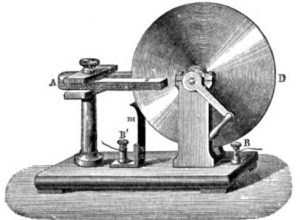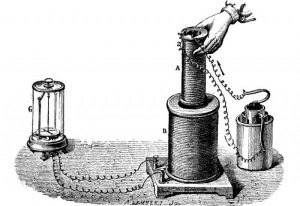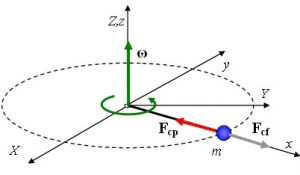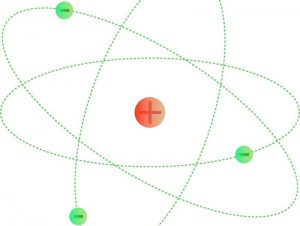Potential energy
The energetic potential that characterizes certain forces is described by its potential energy. This notion of potential can be associated with a field that represents properties of space and/or a long-distance action. A particle, placed at a point in space, will be charged with potential energy, proper to the potential of the place and a movement will result from this. Thus, it is considered that these forces have their origin in a potential energy.

- Unit: Julius
- Symbol: "J"
- Formula Ep = mgh
What is potential energy?
Potential energy is understood as the capacity of a body to perform work according to its configuration within the system of bodies that exert forces between them. In other words, it is capable of generating work as a consequence of body position. Thus, when a body moves in relation to a certain reference level, it is able to accumulate energy.
Characteristics of potential energy
- It requires a force field within it.
- This form of energy has the potential to change the state of other objects around it, for example its configuration or its movement.
- An object placed at a certain height has more potential energy than an object placed on the ground.
- Various forms of energy can be defined within the notion of potential energy. Each of these forms is associated with a type of force that acts in conjunction with the physical properties of matter, for example, its mass, its charge, its elasticity, among others.
History
The term “energy” comes from the Greek word enérgeia used by Aristoteles, who described potentiality (dunamis) as the stored capacity that an object has to do something or be something.
Although the term energy as we know it today, emerged at first in the nineteenth century, ideas around the concept began to form in the late seventeenth century.
In 1686, Gottfried Wilhelm von Leibniz, although he did not properly use the word energy, had already developed concepts that correspond to what we understand today as kinetic and potential energy.
In 1842, Julius Robert Mayer, a German physician, establishes a correlation between heat and mechanical work, two forms of energy. Mayer is the first to propose an Energy Conservation Act. The following year, James Prescott Joule, an English brewer, measures the increase in temperature caused by the mechanical agitation of water, and deduces an equivalence between mechanical work and heat. Later, in 1847, Herman Ludwig von Helmholtz produced a landmark article entitled “On Energy Conservation“. It should be noted that the experimental bases that this significant progress in clarifying the concept of energy are carried out by amateurs. Mayer is a physician and Joule is a brewer, they are not physicists.
Years later, in the 19th century, the concept of potential energy was introduced by the Scottish engineer William Rankine, although as mentioned above, the Greek philosopher Aristotle had already dealt with the notion of potentiality in his time.
Formula and units
The displacement that a falling object is able to make will be determined by the height at which it is located. Thus, the general formula is Ep=mgh, where Ep refers to potential energy, m refers to mass, g equals gravity and h equals height.
On the other hand, the potential energy is calculated in joules (J), the mass m in kilograms (kg), the acceleration of gravity (g), in meters per second (m/s2) and finally, the height (h) is measured in meters (m).
Elastic potential energy
It is produced when the internal energy accumulated in a deformable solid is increased by the work exerted by the forces causing the deformation.
Potential gravitational energy
It’s the one that bodies possess in height. This energy will then depend on two clearly delimited factors: gravity (the attraction that the Earth exerts on their bodies, and the mass of these. Thus, when we want to establish the potential gravitational energy of a particular body, we must perform this task with the help of the formula m x g x h, where m is the mass, g is the constant of the force of gravity and h is the height.
Potential chemical energy
It is that which is transformed into kinetic energy from an internal combustion process. Vehicles that run on gasoline recover its potential chemical energy.
Potential nuclear energy
Nuclear energy is a reaction in which two atomic nuclei join to form a heavier nucleus.
The largest potential energy reservoir in the universe is nuclear energy. On earth, they are the large, disintegrating atoms that break down into smaller atoms. At that time, they release a large amount of energy.
Electrostatic potential energy
Electrostatic or electrical energy represents the energy transferred from one system to another (or stored) by electricity, i.e., by electric charge movement. Being thus more than an energy in itself, it is an energy vector.
Examples
- A ball acquires, when it is lifted, a potential gravitational energy, which is not only apparent when we drop it.
- During a combustion process, oil, gas or coal convert their chemical energy into heat, and often into light.
- In nuclear power plants, fission reactions of uranium nuclei take place and part of the heat generated is transformed into electricity.
- Systems that provide electricity transfers such as batteries or alternators are an example of electrostatic energy.
How to cite this article?
Briceño V., Gabriela. (2019). Potential energy. Recovered on 23 February, 2024, de Euston96: https://www.euston96.com/en/potential-energy/









